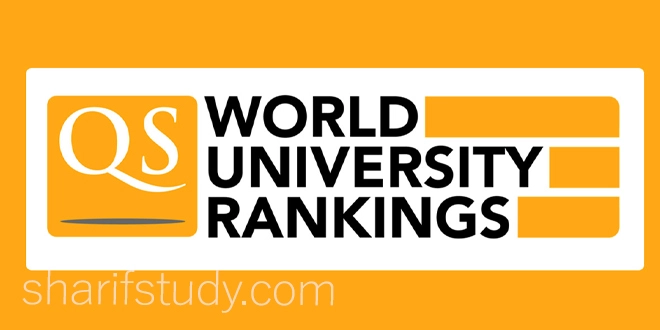The QS World University Rankings 2025 are among the most trusted and referenced global rankings of higher education institutions. Published annually by Quacquarelli Symonds (QS), these rankings assess over 1,500 universities based on criteria such as academic reputation, research impact, international diversity, and graduate employability.
Looking for Malaysia’s top universities based on QS? Click here for Malaysia University rankings!
With global influence on student decisions, policymaking, and institutional strategy, understanding QS Rankings is crucial in 2025. This article covers how the QS methodology works, key changes this year, and how universities — especially in Malaysia — are performing globally.
What is QS World University Ranking?
The QS World Ranking, established by Quacquarelli Symonds, is one of the most respected and widely referenced university ranking systems globally. It was first introduced in 2004 in collaboration with Times Higher Education and later became an independent entity in 2010. The primary purpose of the QS World Ranking is to provide a reliable comparison of universities worldwide based on various performance indicators. It supports students, institutions, and employers in understanding the relative standing of universities in terms of academic excellence, research output, and global influence.
Methodology of QS Ranking
The methodology behind the QS World Ranking is comprehensive and multifaceted, ensuring a holistic evaluation of universities. The ranking system uses six key indicators:
- Academic Reputation (40%): Based on a global survey of academics.
- Employer Reputation (10%): Derived from a survey of employers.
- Faculty/Student Ratio (20%): Evaluates the teaching quality.
- Citations per Faculty (20%): Measures research impact.
- International Faculty Ratio (5%): Assesses the diversity of the academic staff.
- International Student Ratio (5%): Looks at the diversity of the student body.
Academic Reputation
Academic reputation is a important part of the QS World Ranking, accounting for 40% of the total score. This indicator is drawn from a global academic survey that gathers opinions from academics regarding the best institutions in their field of expertise. The survey covers a wide range of disciplines and aims to capture the subjective perceptions of those who are deeply involved in the academic community. A strong academic reputation can greatly improve a university’s position in the QS World Ranking.
Employer Reputation
Employer reputation reflects the opinions of employers about the employability of graduates from different universities. This indicator, making up 10% of the total score, is based on surveys that ask employers to identify the institutions they believe produce the best graduates. This metric highlights the relevance and practicality of the education provided by universities, ensuring that students are well-prepared for the job market.
Faculty/Student Ratio
The faculty/student ratio is an essential measure of the quality of education and attention each student receives. This indicator, making up 20% of the ranking, evaluates the number of academic staff relative to the number of students. A lower ratio often indicates smaller class sizes and more personalized instruction, which can lead to a better learning experience.
Citations per Faculty
Citations per faculty are a measure of the research output and impact of a university. This indicator, which also constitutes 20% of the total score, assesses the number of citations received by the research papers produced by the faculty. A high citation count indicates influential research that contributes significantly to the academic community and beyond.
International Faculty Ratio
The international faculty ratio, accounting for 5% of the QS World Ranking, evaluates the proportion of academic staff from outside the university’s home country. This indicator reflects the global appeal and diversity of the institution’s academic environment. A higher ratio of international faculty suggests a more inclusive and varied academic culture.
International Student Ratio
Similar to the international faculty ratio, the international student ratio (5%) assesses the diversity of the student population. A diverse student body enhances the cultural experience on campus and fosters a global perspective among students. Universities with a high proportion of international students are often more attractive to prospective students looking for a multicultural environment.
Comparing QS World Ranking with Other Rankings
The QS World Ranking is one of several prominent university ranking systems, each with its own methodology and focus. Other well-known rankings include the Times Higher Education (THE) World University Rankings, the Academic Ranking of World Universities (ARWU), and the U.S. News & World Report Best Global Universities Rankings. While these rankings share some similarities, they also have distinct differences:
- THE World University Rankings: Emphasizes teaching, research, citations, international outlook, and industry income.
- ARWU (Shanghai Rankings): Focuses on research output, quality of faculty, and academic achievements.
- U.S. News & World Report: Uses a combination of reputation surveys, bibliometric data, and various indicators of international collaboration.
QS World University Rankings by Subject 2025
The QS Rankings 2025 also evaluate universities based on individual subject performance. These subject-specific rankings highlight strengths in disciplines like Engineering, Medicine, Computer Science, Business, and Arts & Humanities.
- MIT: #1 in Engineering & Technology
- Harvard University: Top-ranked for Medicine and Life Sciences
- Stanford University: Leading in Business and Management Studies
- University of Oxford: Top in Arts & Humanities
These insights help students choose not only the best universities overall, but also those excelling in their desired fields of study.
Top Universities in QS World Ranking
Each year, the QS World Ranking highlights the top universities globally, showcasing institutions that excel across the various indicators. Some of the consistently top-ranked universities include:
- Massachusetts Institute of Technology (MIT)
- Stanford University
- Harvard University
- California Institute of Technology (Caltech)
- University of Oxford
- University of Cambridge
These universities are renowned for their academic excellence, groundbreaking research, and significant contributions to their respective fields.
Regional Analysis of QS World Ranking
The QS World Ranking offers insight into the performance of universities across different regions:
- North America: Dominated by institutions from the United States and Canada, known for their research output and academic reputation.
- Europe: Home to many of the world’s oldest and most prestigious universities, including Oxford, Cambridge, and ETH Zurich.
- Asia: Rapidly rising in the rankings, with universities like the National University of Singapore (NUS) and Tsinghua University leading the way.
- Australia and New Zealand: Known for their high-quality education systems and research contributions, with universities like the University of Melbourne and the University of Sydney being notable mentions.
Impact of Qs Rankings on Malaysian Higher Education
The QS World University Rankings exert a major influence over views and decisions in Malaysia’s higher education sector.
The rankings not only serve as a measure of institutional performance, but they also have an impact on different aspects of university operations, government policies, and student decisions.
Understanding the ramifications of these rankings is critical for those seeking to effectively navigate Malaysia’s shifting higher education ecosystem. Here’s an analysis of rankings’ impact on Malaysian higher education:
Student Enrollment Patterns
- QS rankings heavily influence the decisions of prospective students seeking higher education opportunities. Higher-ranked universities tend to attract more applications from domestic and international students due to their perceived quality and reputation.
- Malaysian universities strategically leverage their rankings to attract top talent by highlighting their strengths, academic offerings, and student support services.
International Partnerships and Collaborations
- Rankings contribute to the formation of international partnerships and collaborations between Malaysian universities and prestigious institutions worldwide. Higher-ranked universities are often sought after for academic exchanges, joint research projects, and collaborative programs.
- Malaysian universities actively pursue partnerships with top-ranked institutions to enhance their global visibility, facilitate knowledge exchange, and promote cross-cultural understanding.
The QS World University Rankings strongly influence Malaysian higher education, impacting budget distribution, student enrollment patterns, international collaborations, initiatives for research, and government regulations.
Malaysian universities understand the value of rankings as a tool for improving their worldwide competitiveness and try to use their strengths to gain higher rankings, so contributing to the general growth of Malaysia’s higher education circumstances.
Benefits of QS World Ranking for Students
For students, the QS World Ranking serves as a valuable resource for making informed decisions about their higher education. It offers insight into the strengths and weaknesses of various institutions, helping students choose universities that align with their academic and career goals. The ranking also highlights universities that offer diverse and multicultural environments, which can enrich the overall student experience.
Criticisms and Controversies
Despite its widespread use, the QS World Ranking has faced its share of criticism. Some of the common concerns include:
- Subjectivity: The reliance on surveys for academic and employer reputation can introduce bias.
- Weighting: The specific weights assigned to different indicators may not reflect all aspects of university performance.
- Transparency: The methodology and data collection processes have been questioned for their transparency and accuracy.
These criticisms highlight the need for continuous improvement and refinement of the ranking methodology to maintain its usefulness and credibility.
Future of QS World Ranking
As higher education evolves, the QS World Ranking is likely to undergo changes to adapt to new trends and challenges. Future developments may include incorporating more comprehensive measures of online education, sustainability, and social impact. The ranking will continue to play a key role in shaping the global education landscape, providing valuable insights for students, educators, and policymakers.
How to Use QS World Ranking for Academic Planning
Students and educators can use the QS World Ranking as a tool for academic planning. Here are some tips:
- Research: Use the ranking to identify top institutions in your field of interest.
- Compare: Look at various indicators to compare universities based on your priorities.
- Explore: Consider regional rankings to find opportunities in different parts of the world.
- Plan: Use the ranking to set academic and career goals and plan your education journey accordingly.
 SharifStudy Best way to Study in Malaysia
SharifStudy Best way to Study in Malaysia








Hello. What is QS ranking best malaysia? If I study in malaysia, can bangladesh accept the masters study?
Hi, Top ranked universities of Malaysia as of QS Ranking 2025 are UM , UKM, USM, UPM, UTM and Taylor’s university. for more details please check our updated Article : Malaysia University Rankings 2025 or you can contact our experts for a free consultation.